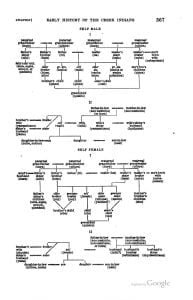Creek Clans
Perryman said that each town consisted of a number of clans or rather a number of segments of clans, and the Town Chief (Talwa Miko) was chosen from the principal one. Whenever another clan increased in numbers and importance so as to exceed that of the principal clan, a part or the whole of this clan would separate from the village and establish a new one. This happened only when the people were so numerous and the leading men so popular that they could induce members of the other clans to unite with them in the enterprise. In this way … Read more

